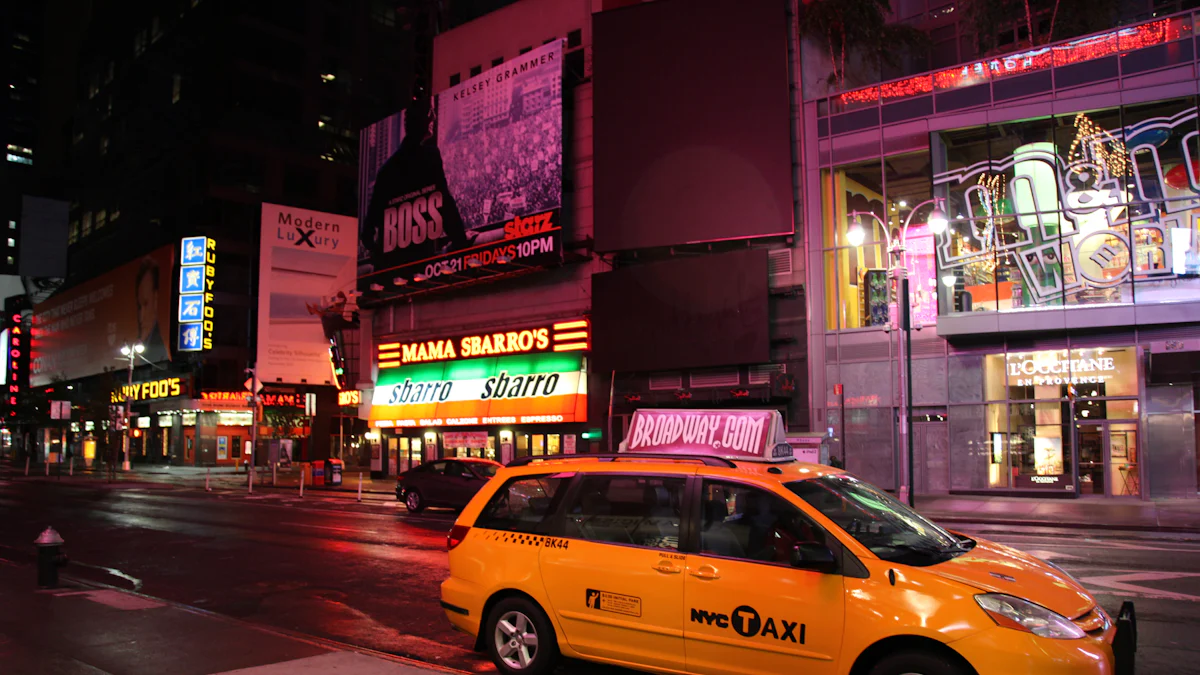
Taxi Advertising Format and Rideshare Impact
In today’s urban landscape, the effectiveness of taxi advertising format is a topic of great interest. As we delve into the analysis of this advertising medium, we aim to compare its return on investment (ROI) with that of rideshare advertising. Additionally, we will explore the impact of rideshare advertising on consumer behavior, shedding light on its influence in urban areas.
To kick things off, let’s take a closer look at how taxi advertising stacks up against rideshare advertising in terms of consumer engagement and ROI.
Urban Impact
Consumer Engagement
When it comes to consumer engagement in urban areas, taxi advertising has shown significant influence. The strategic placement of ads on taxis allows for high visibility and exposure to a wide audience. This can lead to increased consumer engagement with the advertised content.
On the other hand, rideshare advertising, while also present in urban settings, may not offer the same level of visibility as taxi advertising. Consumers may be less likely to engage with ads on rideshare vehicles due to factors such as shorter ride durations and varying vehicle conditions.
City-specific Analysis
The effectiveness of taxi advertising can vary significantly across different urban settings. Factors such as population density, traffic patterns, and local consumer behavior play a crucial role in determining the success of taxi advertising campaigns.
Comparing consumer response to taxi advertising in various cities provides valuable insights into the impact of location on engagement levels. By analyzing these city-specific responses, advertisers can tailor their strategies to maximize consumer engagement in each unique urban environment.
Rideshare Impact
Consumer Behavior
The impact of rideshare advertising on consumer behavior is a compelling area of study. With the rise of rideshare services in urban areas, there has been a noticeable shift in consumer behavior influenced by these advertising efforts. The convenience and frequency of rideshare usage have made it an attractive platform for advertisers to reach their target audience.
In different cities, the response to rideshare advertising can vary significantly. Factors such as local culture, demographics, and the competitive landscape all play a role in shaping consumer behavior towards these ads. Understanding these variations is crucial for advertisers looking to optimize their campaigns across diverse urban environments.
ROI Comparison
Analyzing the return on investment (ROI) for rideshare advertising provides valuable insights into its effectiveness compared to taxi advertising. While both mediums aim to capture the attention of urban consumers, the cost-effectiveness and reach of rideshare advertising present a unique value proposition.
When comparing the effectiveness of rideshare advertising with taxi advertising, it’s essential to consider factors such as ad visibility, audience reach, and engagement levels. By conducting a comprehensive ROI comparison, advertisers can make informed decisions about allocating their resources to maximize their impact in urban markets.
Overall, understanding consumer behavior and conducting a thorough ROI comparison are instrumental in evaluating the influence and effectiveness of rideshare advertising in urban areas.
Purchasing Decisions
Consumer Influence
The influence of taxi and rideshare advertising on purchasing decisions in urban areas is a topic of significant interest. Both advertising formats have the potential to sway consumer behavior and influence purchasing choices. The strategic placement of ads on taxis and rideshare vehicles ensures that they are exposed to a wide audience, potentially impacting their decision-making process.
In urban settings, factors such as ad visibility, messaging effectiveness, and brand recall play crucial roles in influencing consumer purchasing decisions. Understanding the distinct ways in which taxi advertising format and rideshares advertising impact consumer choices allows advertisers to tailor their strategies effectively.
Furthermore, consumer preferences and lifestyle trends in urban areas also affect purchasing decisions. The ability of both taxi and rideshare advertising formats to align with these preferences can significantly impact consumer behavior and ultimately influence their purchasing decisions.
Market Trends
Trends in consumer purchasing behavior influenced by taxi advertising format and rideshares advertising reveal valuable insights into the evolving landscape of urban markets. Adapting to these trends is essential for advertisers looking to stay ahead in an increasingly competitive environment.
The impact of advertising formats on consumer purchasing trends reflects the changing dynamics of urban consumerism. By closely monitoring these trends, advertisers can gain a deeper understanding of how different formats resonate with consumers across various demographics and locations.
Understanding market trends shaped by taxi advertising format and rideshares advertising provides advertisers with the knowledge needed to craft compelling campaigns that align with evolving consumer preferences.
Advertising Influence
In the realm of advertising influence, it is crucial to gain insights into the impact of taxi and rideshare advertising formats on consumer engagement and purchasing decisions. By comparing the effectiveness of these two mediums in urban areas, advertisers can make informed decisions about their marketing strategies.
Understanding consumer engagement: Both taxi advertising format and rideshares advertising impact consumer engagement differently, with varying levels of visibility and exposure.
Impact on purchasing decisions: The influence of advertising formats on consumer purchasing decisions plays a vital role in shaping brand recall and messaging effectiveness.
In conclusion, a comprehensive understanding of the influence of taxi and rideshare advertising formats is essential for crafting impactful campaigns tailored to diverse urban environments.
See Also
How Self-Driving Cars and Ride-Hail Services Affect Taxi Ads in the UK
The Influence of Play Octopus on Rideshare Ads: Transforming Tablet Advertising
Inside Taxi vs. Outside Taxi Ads: Which is More Valuable in 2024?
How Traffic Affects Taxi Ads: Tactics for Urban Areas
Optimizing the Influence of Rear-Mounted Screens for Taxi Ads
